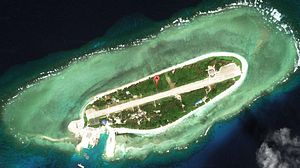Rising tensions in the South China Sea are threatening peace and stability in the region, one of the world’s most important shipping channels. In recent months, amid growing concern in the international community, there has been considerable media coverage of the arbitration filed by the Philippines at the Permanent Court of Arbitration (PCA) concerning the legality of mainland China’s claims in the South China Sea.
Thus far, two hearings have been held by the Arbitral Tribunal – one concerning jurisdiction and admissibility in July 2015, with the Tribunal subsequently ruling on October 29 that it had the power to hear the case, and another on the merits in the last week of November 2015. In the arbitration, the Philippines challenged the status of Taiping Island (Itu Aba), which is part of the sovereign territory of the Republic of China (Taiwan). By claiming that Taiping Island constitutes a rock rather than an island, the Philippines is undermining efforts to resolve disputes and promote stability.
Taiping Island
In 1946, the Republic of China (Taiwan) recovered islands and geological features in the Nansha (Spratly) Islands from Japan, including the largest naturally formed island – Taiping Island. According to transcripts from the two hearings, the Philippines attempted to characterize Taiping Island as a rock by indicating that it has an area of less than 0.43 square kilometers, no permanent population, no potable water, and is capable of generating limited quantities of agricultural produce.
Contrary to Philippine statements, however, Taiping Island possesses an adequate water supply. There are several groundwater wells on the island, some of which were in use long before Taiwan’s Coast Guard Administration took over management of Taiping Island in 2000 from the ROC military. Taiping Island, which in fact has a land area of 0.50 square kilometers, has consistently sustained more than 100 people, and is home to a functioning farm that produces a wide variety of fruits and vegetables including corn, sweet potatoes, mangoes and guavas. It also has a hospital to provide emergency medical treatment to the personnel stationed there as well as foreign fishermen operating in the area.
It is evident that Taiping Island qualifies as an island in accordance with Article 121 of the United Nations Convention on the Law of the Sea (UNCLOS). So why then does the Philippines argue that it is a rock?
Exclusive Economic Zones
The distance between Taiping Island and the Philippine island of Palawan is about 199.6 nautical miles. As each is entitled to an exclusive economic zone (EEZ) of 200 nautical miles, this would create a wide area of overlap. Furthermore, if Taiping Island is deemed capable of generating a 200-nautical mile EEZ and a continental shelf, a delimitation of maritime boundaries would need to be conducted for the entire overlapping area, which is not within the jurisdiction of the Tribunal.
Obviously, the claim that Taiping Island is a rock is fallacious. The Philippines raises the issue so it can contend that the EEZ around Palawan does not overlap with any maritime zone that could be generated by other maritime features. Under this claim, the Philippines argues that Taiping Island’s maritime area should be confined to 12 nautical miles by citing judgments from Nicaragua v. Columbia (2012), as well as St. Martin’s Island and Abu Musa (Delimitation of the Maritime Boundary between Bangladesh and Myanmar, 2012), jumping to conclusions on the definition of the maritime area for Taiping Island. The Philippines deliberately ignores the fact that these cases are concerning maritime delimitation.
The Philippines’ argument regarding Taiping Island is simply a legal tactic that does not contribute to the practical resolution of disputes in the South China Sea. Indeed, its position might further escalate tensions.
Misleading Assertions
In its statement to the Tribunal, the Philippines also misrepresents quotes by ROC President Ma Ying-jeou. In one case, it alleges that the president wrote the ROC government claimed sovereignty over islands south of the Shisha (Paracel) Islands for the first time in 1935. In fact, in the source for these quotes, the President states that the ROC issued a map of the islands in 1935 that for the first time divided them into four different groups. In the same passage, Ma clearly states that the ROC government defended its sovereignty over the islands through diplomatic means in the early 20th century.
By challenging the legal status of Taiping Island, the Philippines is in fact undermining its own case for the fair and just application of UNCLOS. In order to ensure long-term stability in the region, all parties concerned must respect the principles and spirit of international law and pursue peaceful cooperation for mutual benefit, as outlined in President Ma’s South China Sea Peace Initiative.
Kuan-Hsiung Wang is a professor at the Graduate Institute of Political Science, National Taiwan Normal University.

































